Yucca queretaroensis – part 2
On a recent trip with Brian Kemble and Jeff Chemnick to east central Mexico and the states of Hidalgo, Queretaro, Guanajuato, San Luis Potosi and Tamaulipas, I had the good fortune to further examine Yucca queretaroensis growing at a total of five separate localities. Our first stop for these awesome yuccas was along the road coming back out of Toliman Canyon in Hidalgo. This was my third time stopping at this cluster of yuccas and still no flowers! Anyway, I took many photos in the hopes that one or two would be usable in this post and a future presentation.
There was some seed made available a few years back through Rare Palm Seed, and having grown some of those, noticed the variability in the leaf width was not what I had observed in the field at the two spots I had seen these before. Jeff commented that San Marcos Growers had the same results with some plants having super skinny leaves that were barely 2 mm wide and others having leaves nearly 5 mm wide. As we drove, Jeff, Brian and I discussed this seemingly unusual aspect of these plants. We went through several possibilities for this occurrence, including natural variability (which had not been observed in the field), Young plants having broader leaves, and then having the super skinny leaves upon maturity, or, gasp!, hybridization with Yucca filifera. Now, you might be wondering why that would be so shocking, but remember yuccas are pollinated by moths, and although many are species specific, some of the moths will pollinate more than one species.
The problem we were having with the last idea, is that none of us had seen any plants that looked like hybrids in the field. Until this trip, that is. As we continued making our way out of Toliman Canyon, Jeff spotted a bird, and donning his binoculars, he noticed some yuccas up a canyon with easier access. We all hiked to those plants and, lo and behold, plants with super skinny leaves and plants with broader leaves! There were no Yucca filifera in the same drainage, but there were some not too far away, and easily within moth flying range. An added bonus was the fact that these plants were growing on a gentle slope and much more easily accessible than those further down the canyon that were growing on an incredibly steep slope. We stayed the night in Hotel Central in Zimapán with plans to head across the Rio Moctezuma with our ultimate goal of San Joaquin in Queretaro.
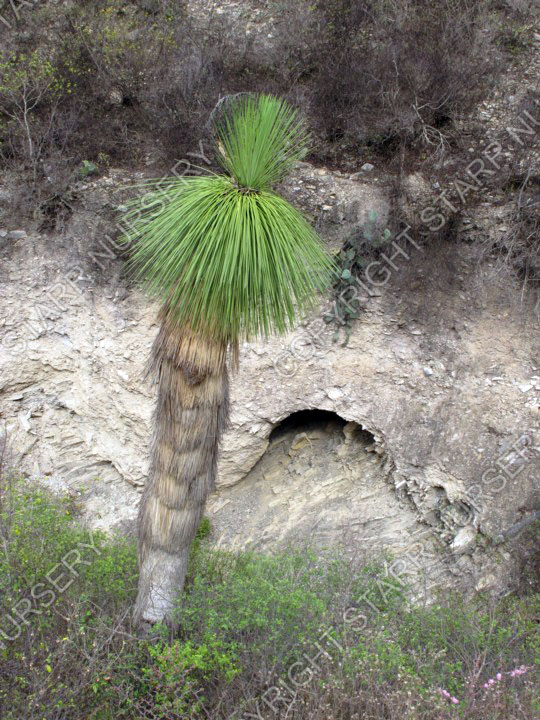
A super skinny leaved Yucca queretaroensis
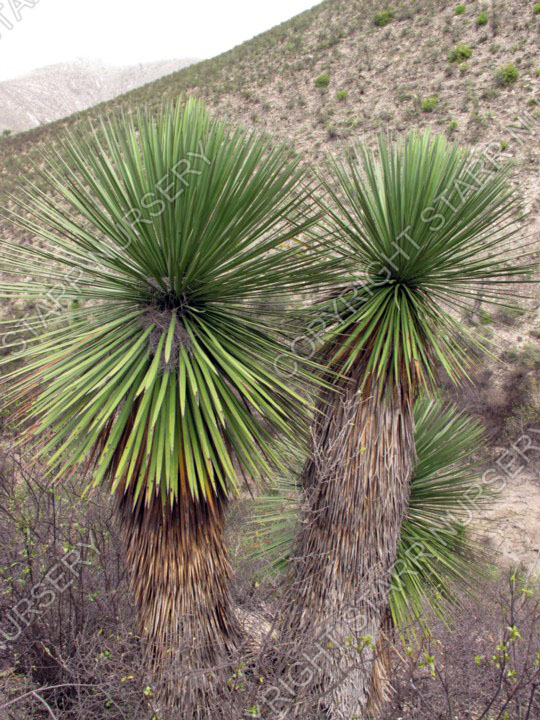
Could this be a hybrid with Y. filifera?
After making several stops to see some really cool cactus and other succulents, we rumbled in to San Joaquin for the night where we found nice accommodations at the Florida Inn. The next morning found us thundering down to the Rio Moctezuma from the west side where we spotted more Yucca queretaroensis growing on the steep slopes across the canyon. After spending some time at the bottom of the barely flowing Rio Moctezuma, we pointed the rental car uphill, returning to San Joaquin and then on down the road to the crossing of the Rio Estórax and the Yucca queretaroensis near Bucareli. The yuccas at this locality also grow on a steep slope, but we were able to follow a goat path down a bit in order to get up close to some excellent specimens. All the plants along here appeared to have the super skinny leaves like the ones in Toliman Canyon and the ones on the west side of the Rio Moctezuma.
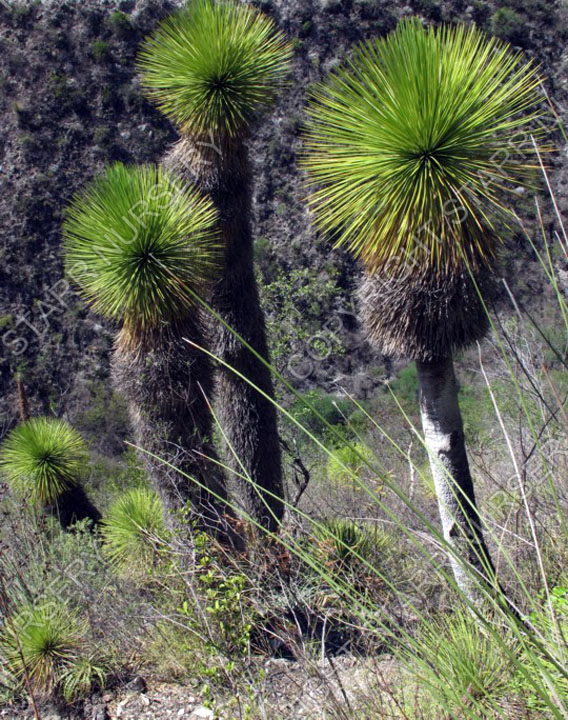
Can’t wait until mine get this tall!!!
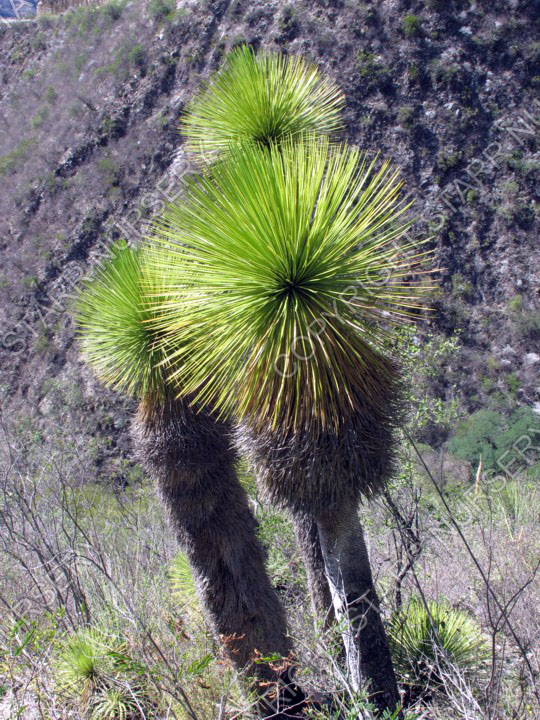
These are awesome plants !!!
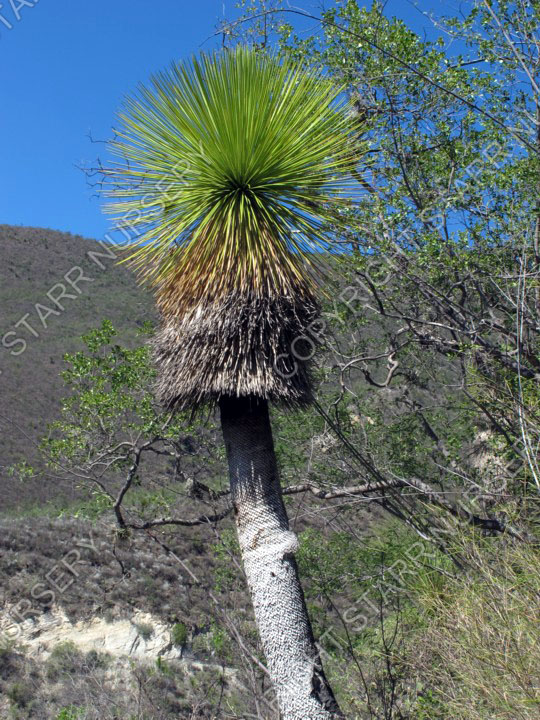
This plant had a short skirt.
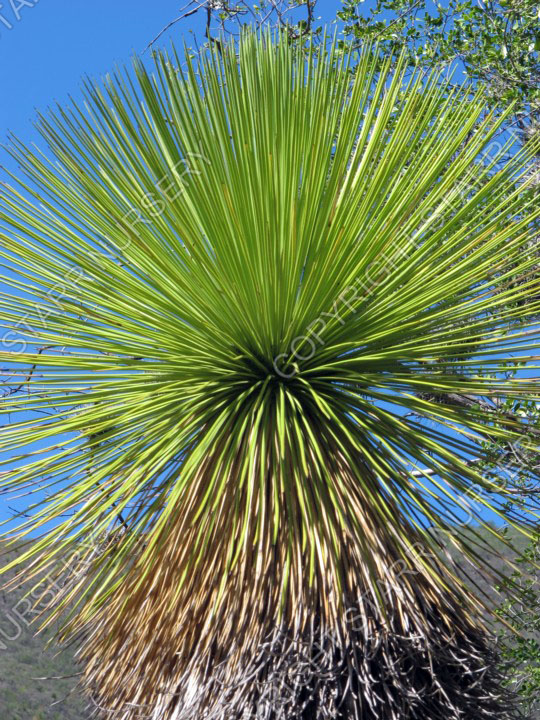
A beautiful crown of leaves.
We left the Rio Estórax behind, spent several days tooling around San Luis Potosi, Tamaulipas and Nuevo Leon, before arriving in Guanajuato and the former mining town of Mineral de Pozos. On a whim, we launched an assault on Xichu where we hoped to visit the Yucca queretaroensis growing nearby. We took our sweet time heading out there as we made a couple of side trips looking for various cactus and other succulents. We stopped at the spot where the yuccas are found growing outside of Xichu, and made our way up the side canyon inspecting numerous plants. I had been here once before in 2007 and got a quick look at a handful of the yuccas before we had to head back. This time, however, we spent a significant amount of time in the canyon where we found quite a few yuccas. Once again, the majority of them had the super skinny leaves, but there were a couple that had the wider leaves that we had seen on the way out of Toliman Canyon. I don’t know the full range of occurrence for this handsome species, but the populations we saw occur in a northwest to southeast alignment, and only the populations at each extreme had plants with broader leaves. Now, certainly we did not inspect every plant, because in a couple of spots there were dozens and dozens of plants that were inaccessible, at least for the amount of time we had available.
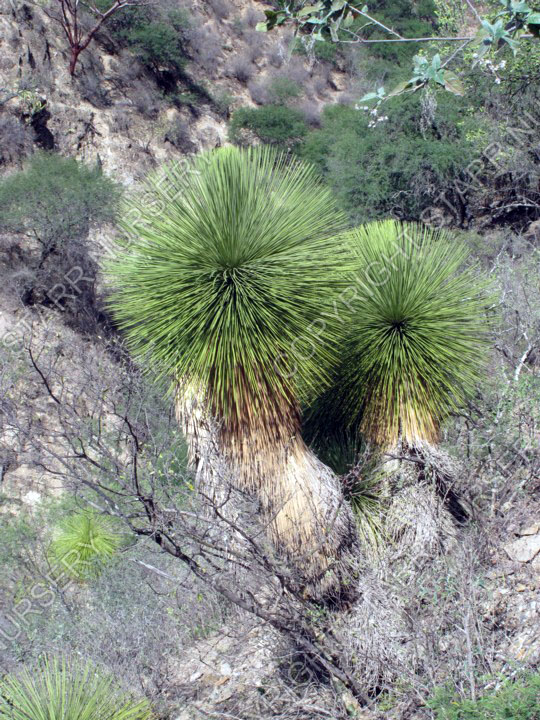
A plant with a couple of arms and full, rounded heads of leaves.
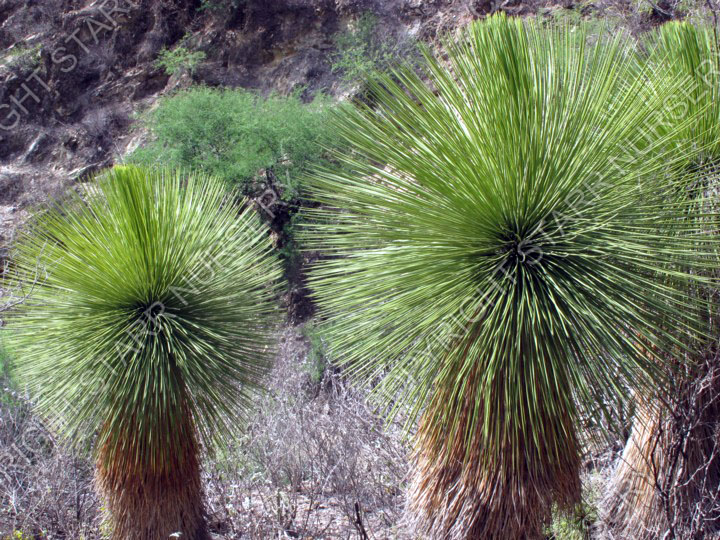
More perfectly rounded heads of leaves.
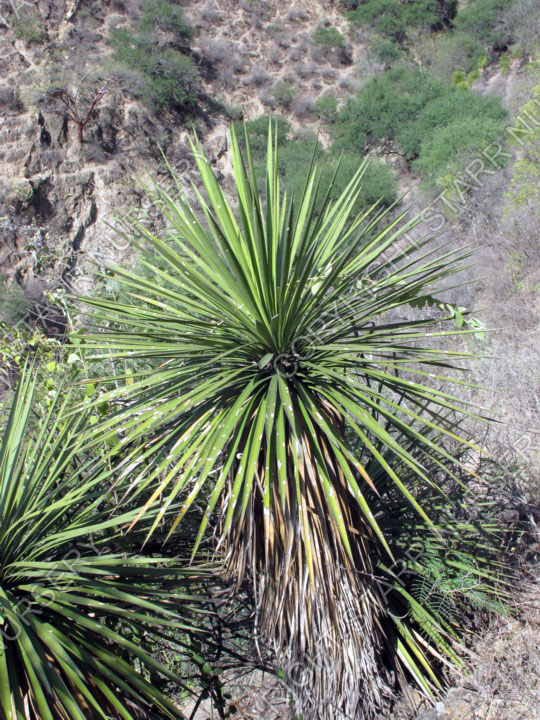
Looks much like the wide leaved plants above Toliman Canyon.
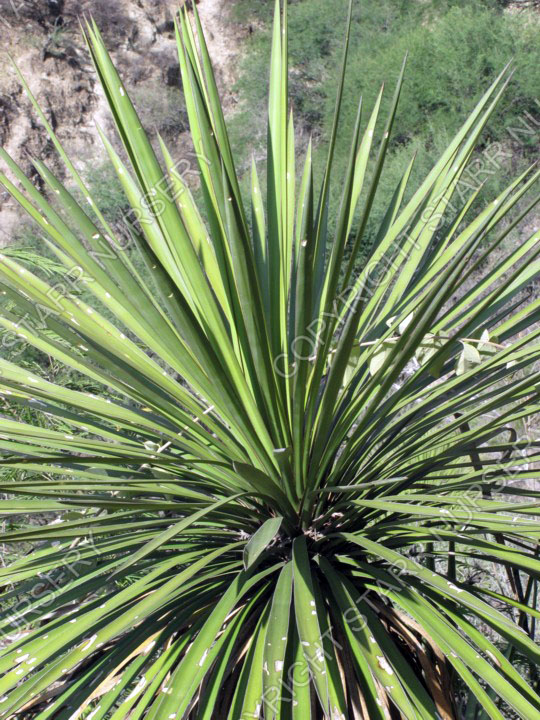
Compare the wide leaves to those super skinny ones. Is this a hybrid?
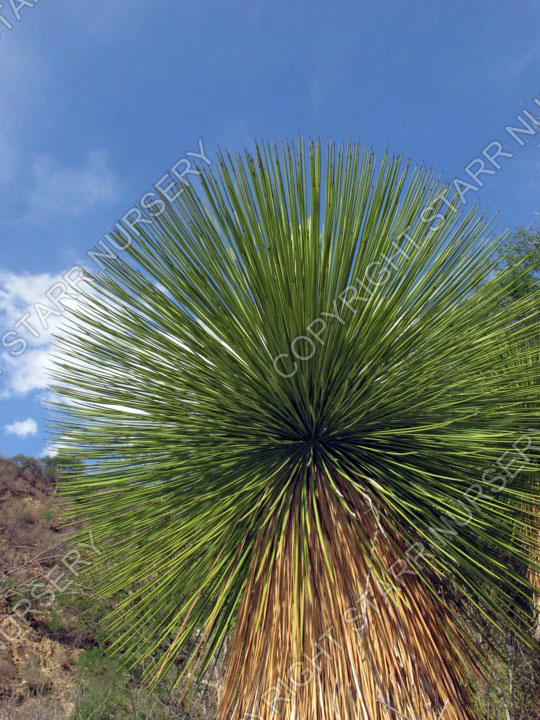
A gorgeous head of leaves on a plant outside of Xichu.

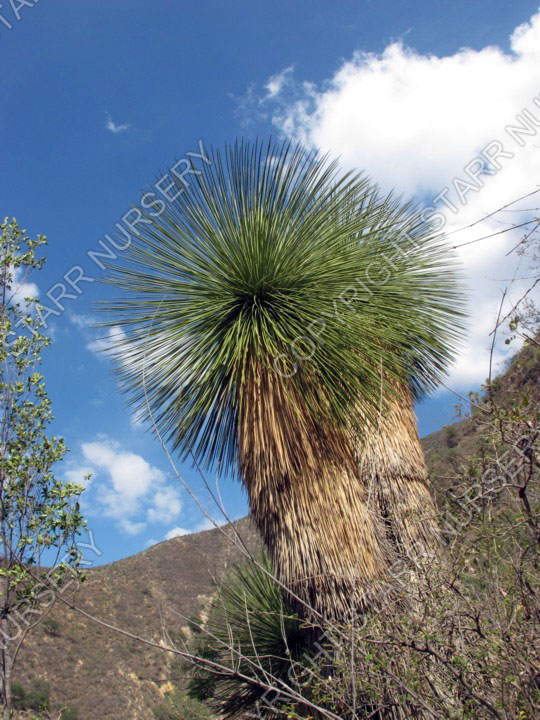
These make great silhouettes!!!
The upshot is, the plants with the skinniest leaves are spectacular, but even the plants with broader leaves are incredibly beautiful whether or not that is simply a result of population variation or of hybridization with a broader leaved species such as Yucca filifera. If you have one of these beauties, enjoy it regardless of the leaf width.
For more photos, check out Paul Spracklin’s blog here while more photos and a link to the original description can be found on agavaceae.com
If you ever get a chance to go see these in habitat, make sure you go! In fact, the 2015 CSSA tour will be visiting some of these spectacular plants, so keep watching the CSSA website for more information. Hope you enjoy the photos, and will share your thoughts about the wide leaved plants being hybrids or simply variation found in only two of the five localities.
Cheers,
Greg
Posted in: Uncategorized
Leave a Comment (9) ↓
Great post, Greg! As you said, these are incredibly beautiful plants. I’m glad I picked a thinner-leafed specimen from the batch you have growing at your nursery. Maybe in 20 years it’ll look like the plants you saw outside of Xichu.
Awesome field trip Greg. I love the skirts of spent leaves they hold onto. Keep the blogs coming.
Wow! So that is a cactus? Is it related to saguaro?
Great double-post blog on this spectacular species Greg. I have five of them myself now bought on eBay last summer (2013) – I potted them up to 1 gallon from 2 1/4″ pots and they’ve started growing nicely. Maybe by the time I retire they’ll be half the size of some of these wild specimens. Thanks for the posts!
Nice photo’s Greg, of course hybrids can be found trough whole Mexico and Usa by al species, by some species its more easier to see then by others, in Texas it gives thousands of hybrids between rostrata and thompsoniana but most people will never see it, the Queretaroensis hybrids come more close to the Linearifolia hybrids, its more easy to see, wide leafs etc, we sell more than 15 years hybrids of those but I never saw one of Querataroensis. I created also by hand plenty of Mexican Usa hybrids as a hobby but at the end some look the same as one of the mother plants. The point is to catch those nice ones who look indeed very different.
Cheers Roland – Tropical Centre
We have what I believe is a Yucca queretaroensis growing in my back yard in Oakland, CA. It is a beautiful plant and loves our climate. I just purchased a small one from you to grow in Santa Rosa. Here are some pictures of mine: https://goo.gl/photos/2h284wPT8ZxYtuUk9
Hi Steve, the plant in your pictures is actually Dasylirion quadrangulatum.
thanks! got any of those in stock!
Yes, I do, apparently I don’t have them in the store yet, but they are in 6 inch pots and sell for $18.00 each plus the shipping.